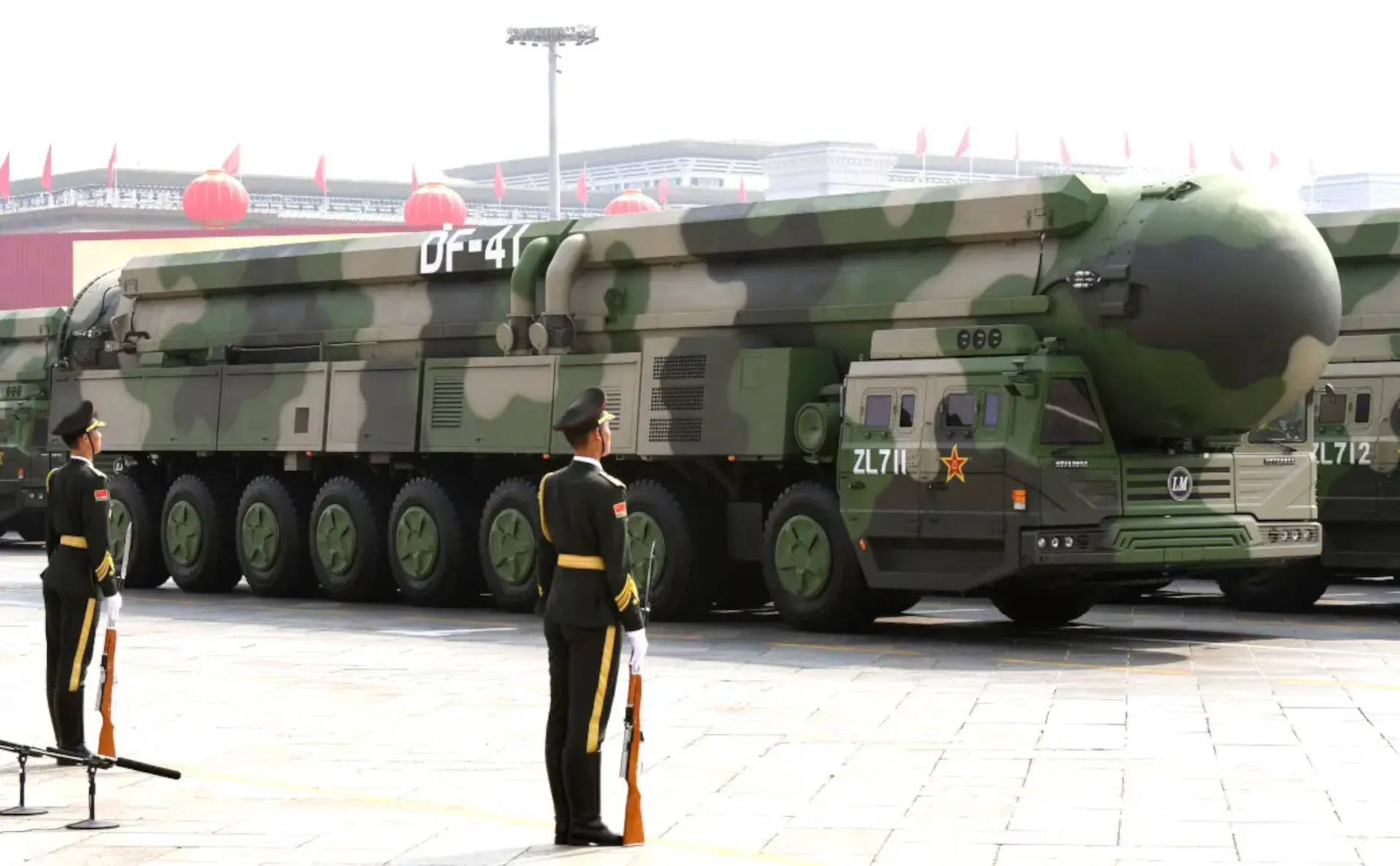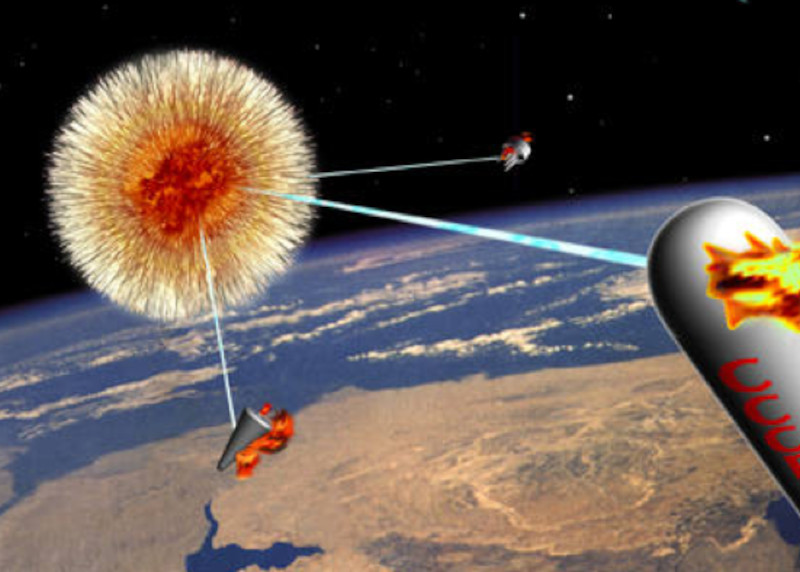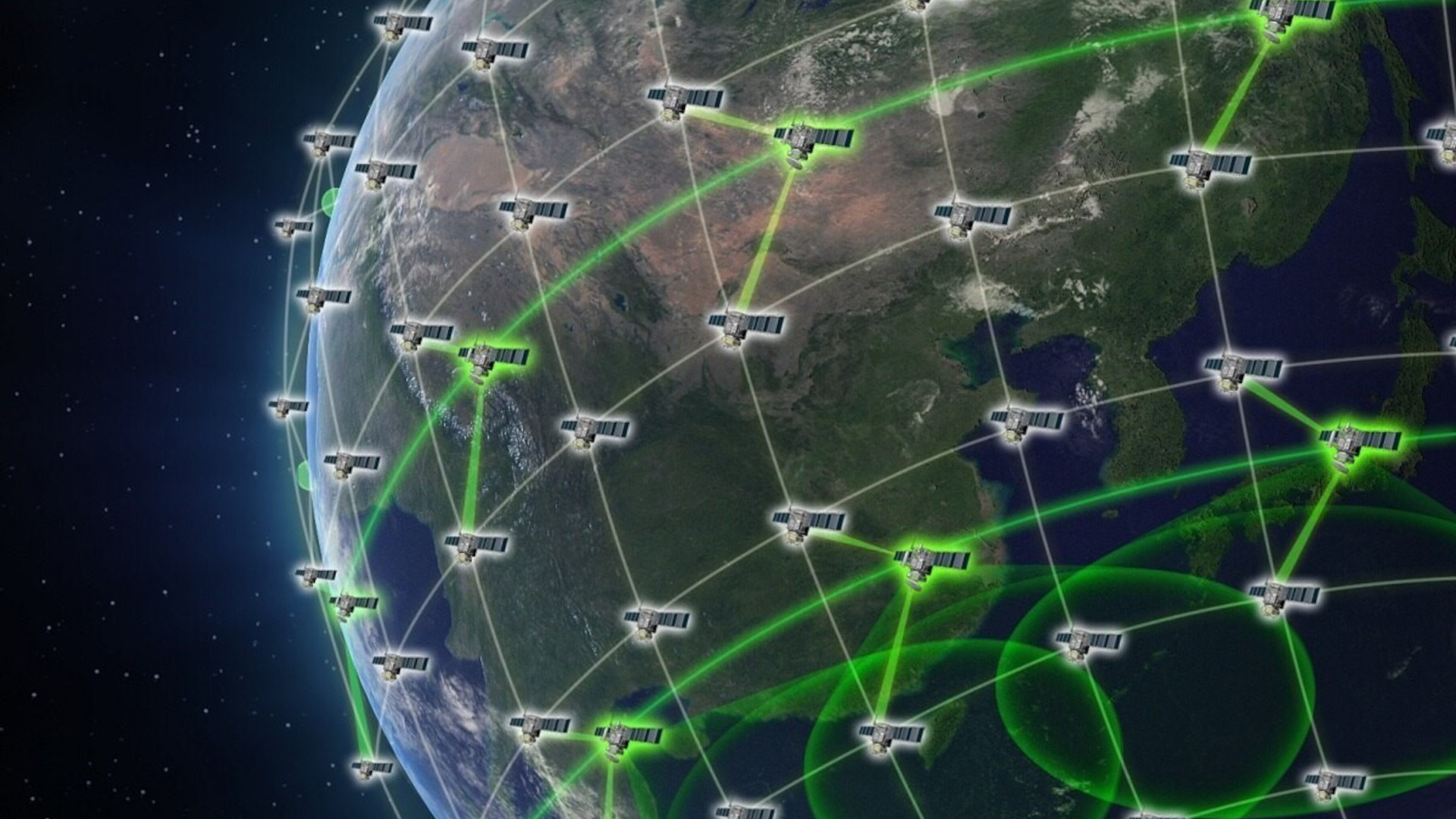Scientists at a Chinese military nuclear laboratory say a moderately large atomic detonation near the edge of space could potentially create a temporary cloud of radiation that could quickly damage or destroy a large number of satellites in low Earth orbit. There are certainly questions about this anti-satellite concept, including its general practicality. However, it does highlight something that is increasingly set to be a hot topic of discussion in the coming years: how might you rapidly neutralize an enemy’s distributed satellite constellation similar in concept to Starlink?
A team a China’s Northwest Institute of Nuclear Technology (NINT), a People’s Liberation Army (PLA) run research and development institute linked to the country’s expanding nuclear weapon enterprise, published a paper on their findings earlier this month, according to a recent report from the South China Morning Post (SCMP). The researchers said their findings were based on data produced by a highly accurate computer model specifically developed to simulate the nuclear weapon effects at various altitudes depending on yield.

“The simulation results suggest that a 10-megaton warhead – modestly powerful by today’s standards – could create a serious threat to satellites if it detonates at an altitude of 80 km (50 miles),” according to SCMP’s report. “The blast could turn air molecules into radioactive particles and produce a cloud with a shape similar to an upside-down pear.”
“The strong residual radiation of the debris cloud may cause failures of spacecraft moving in it, such as satellites, or even cause direct damage that can lead to destruction,” the paper said, SCMP reported. “Due to the high concentration of fission products inside the debris cloud, the released gamma rays and beta particles are strong, making their effects on spacecraft and communications within the affected area stronger.”
The team at NINT also reportedly concluded that the cloud would dissipate quickly, reducing the risk to satellites outside of those caught in the initial products of the blast. Though SCMP’s story does not lay out how NINT’s proposed anti-satellite weapon would function specifically, extremely high levels of radiation, especially gamma rays, produced by a nuclear explosion could fry electronic systems, including those inside spacecraft that might not be otherwise sufficiently hardened.
There are a number of immediate questions not answered by the SCMP report, such as the risk of radiation or radioactive material falling back to Earth after a near-space detonation or generating a dangerous electromagnetic pulse (EMP), or any other potential terrestrial impacts. High-altitude nuclear explosions have the potential to cause destructive EMP effects, as most famously evidenced by damage to electric systems in Hawaii after the U.S. military’s Starfish Prime nuclear weapon test in space over the Pacific in 1962. However, various factors can impact how severe those effects actually are, and a 1989 report from the Department of Energy’s Sandia National Laboratories determined only around one percent of streetlights in Hawaii were knocked out after the Starfish Prime detonation. Still, this was an analog era where few things ran on delicate microprocessors and other complex electronics.

It’s not clear how much danger there might be of damaged or destroyed satellites effectively turning into hazardous space debris, akin to what might be produced by kinetic anti-satellite weapons, either.
Regardless, there is no indication one way or another from the NINT paper that the PLA is actively pursuing this kind of nuclear anti-satellite capability.
That being said, this concept is clearly intended to get at, at least in part, a very real problem that the PLA, among others, is increasingly likely to face in a future high-end conflict. What does one do about an opponent using various distributed constellations of satellites to securely and resiliently perform various functions despite attacks from more conventional terrestrial anti-satellite weapons, like direct-ascent interceptors, and on-orbit threats? The satellites in question are likely to be small and relatively easily replaceable, increasing the cost to engage them on an individual basis, and doing so to a handful of satellites would only slightly degrade a constellation’s capabilities.
The U.S. military, as a whole, already has multiple programs in the works now to develop these kinds of distributed space-based capabilities, to support early warning and missile-defense-related missions, more general intelligence-gathering and surveillance, communications and data-sharing, and more. Various branches of the U.S. armed forces have been exploring how commercial options, including SpaceX’s Starlink distributed satellite internet constellation, will be able to help support future military operations. All of this is in direct response to existing and emerging anti-satellite threats, and other countries, including China, could follow suit for the same reasons.
Starlink has already emerged in recent months as a key communications and data-sharing capability for the Ukrainian military in its fight against invading Russian forces. Back in April, Dave Tremper, Director for Electronic Warfare within the Office of the Undersecretary of Defense for Acquisition and Sustainment, highlighted the commercial constellation’s resistance to Russian jamming. Just today, Derek Tournear, head of the U.S. military’s Space Development Agency (SDA), noted that Russia has not shot down any Starlink satellites, despite past threats and having the means to do so.
It’s perhaps not surprising that Chinese authorities and government-linked researchers have talked about Starlink as a potential national security issue or have otherwise been critical of the system, too. Earlier this year, researchers at the Beijing Institute of Tracking and Telecommunications, which is linked to the PLA’s Strategic Support Force (PLASSF), published a paper that called for, among other things, “a combination of soft and hard kill methods should be adopted to make some Starlink satellites lose their functions and destroy the constellation’s operating system,” according to a separate report from SCMP. Established in 2015, the PLASSF primary missions are managing the Chinese military’s activities in space and cyberspace.

It’s unclear how much that study does or does not reflect the general attitude of the PLA. However, the Chinese government has criticized SpaceX and the U.S. government over the potential collision risks the ever-growing number of Starlink satellites pose in the past. Astronomers and others have been critical of Starlink or otherwise raised concerns about the density of the satellites in its constellation, including about increased risks of collisions and how they simply making it harder to observe objects in space from the Earth’s surface.
As the SCMP story on the more recent NINT paper notes, one option for rapidly engaging entire constellations like Starlink, to at least degrade them or to seek to disable certain key functionalities over a broad area, is to detonate nuclear weapons in orbit. This carries substantial risks, especially when it comes to the debris it would create, which could be just as dangerous to friendly satellites. As an example, just today NASA announced that the International Space Station (ISS) had changed its orbit overnight to dodge a piece of debris from a Russian anti-satellite weapon test last year.
Space-based systems with expendable x-ray lasers – generated using the detonation of a nuclear weapon – or nuclear-powered particle beams were also proposed elements of the infamous late Cold War U.S. Strategic Defense Initiative (SDI) anti-ballistic missile program, better known as Star Wars. Both of those concepts ran into serious technical hurdles. A more recent U.S. military effort to develop a space-based particle beam weapon was effectively canceled in 2019 after running into similar issues.

Conventional warheads that produce very fast-flying clouds of physical particulate matter might be another alternative and have been proposed as a way for engaging hypersonic threats within the Earth’s atmosphere. The problem here is that employing such a weapon in space would produce exactly the kinds of extremely hazardous debris and other problems that the concept proposed in the NINT paper is trying to avoid.
Non-destructive attacks, such as electronic warfare jamming or using lasers to blind optics, are already part of this picture, as well. U.S. Space Force’s number two officer, Gen. David Thompson, said in an interview for a piece published in The Washington Post last year that American military assets in space are engaged on a daily basis by these kinds of threats emanating from China and Russia. As already noted, Starlink has demonstrated in the course of the conflict in Ukraine how a distributed satellite constellation can be highly resistant to jamming, at least.
Cyberattacks and physical sabotage targeting assets and infrastructure back on Earth would be another vector for attempting to disrupt the capabilities provided by distributed satellite constellations.
All told, there are no clear indications one way or another that the PLA is actively pursuing NINT’s nuclear weapon-based concept, or any other alternative, specifically for rapidly targeting large groups of satellites. At the same time, China’s armed forces are known to be exploring other novel and potentially nuclear-armed weapon concepts to varying degrees. This includes actual tests of a fractional orbital bombardment system-like design that reportedly uses a hypersonic glider-style aerospace vehicle that is capable of releasing its own payloads, as you can read more about here.
This all comes amid a new effort led by the U.S. government that looks to aiming for a worldwide ban, or at least a global moratorium, on destructive anti-satellite weapon testing in space, which presents clear risks to commercial and scientific assets in orbit. American authorities have been actively pushing allies and partners to join them in vowing to abstain from any such tests in the future.
Still, between the various studies coming out of various PLA-linked research institutions in China and the official criticism of Starlink from the government in Beijing, it does seem clear that the challenges that future distributed satellite constellations are likely to pose in future high-end conflicts are on the Chinese military’s radar. With these kinds of space-based networks now being hotly pursued, especially by the U.S. military, answering the question of how to neutralize or at least degrade those capabilities now appears to be an emerging priority for China’s armed forces.
Contact the author: joe@thedrive.com
